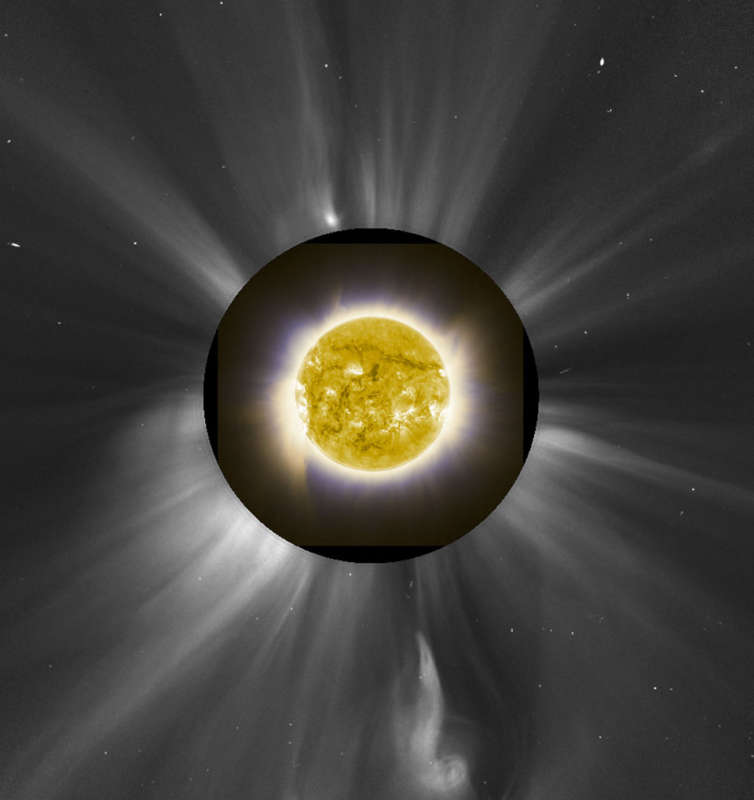Credit & Copyright: D. Seaton (ROB) &
J. M. Pasachoff
(Williams College Eclipse Expedition),
NRL,
ESA,
NASA, NatGeo
Explanation:
Sometimes, a total eclipse of the Sun is an opportunity.
Taking advantage of such, the above image shows the
solar eclipse earlier this month
as covered and uncovered by several different solar observatories.
The innermost image shows the Sun in
ultraviolet light as recorded over a few hours by the
SWAP instrument aboard the
PROBA2 mission in a
sun-synchronous low Earth orbit.
This image is surrounded by a ground-based eclipse image, reproduced
in blue, taken from
Gabon.
Further out is a circularly blocked region used to artificially dim the central sun
by the
LASCO instrument aboard the Sun-orbiting
SOHO spacecraft.
The outermost image -- showing the outflowing
solar corona -- was taken by LASCO ten minutes after
the eclipse and shows an outflowing solar corona.
Over the past few weeks, our Sun has been showing an
unusually
high
amount of
sunspots,
CMEs, and
flares -- activity
that was generally expected as the Sun is currently going through
Solar Maximum -- the busiest
part of its 11 year
solar cycle.
The above resultant image is a picturesque montage of many solar layers
at once that allows
solar astronomers to better match up active areas on or near the Sun's surface
with
outflowing jets in the Sun's corona.
Free lecture:
APOD editor to speak in NYC on Jan. 3
1999 2000 2001 2002 2003 2004 2005 2006 2007 2008 2009 2010 2011 2012 2013 2014 2015 2016 2017 2018 2019 2020 2021 2022 2023 2024 2025 |
Январь Февраль Март Апрель Май Июнь Июль Август Сентябрь Октябрь Ноябрь Декабрь |
NASA Web Site Statements, Warnings, and Disclaimers
NASA Official: Jay Norris. Specific rights apply.
A service of: LHEA at NASA / GSFC
& Michigan Tech. U.
|
Публикации с ключевыми словами:
Sun - eclipse - solar maximum
Публикации со словами: Sun - eclipse - solar maximum | |
См. также:
Все публикации на ту же тему >> | |
